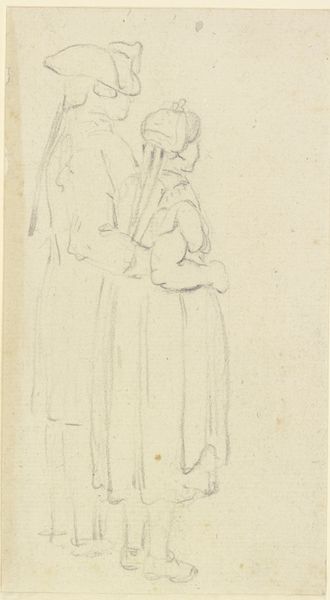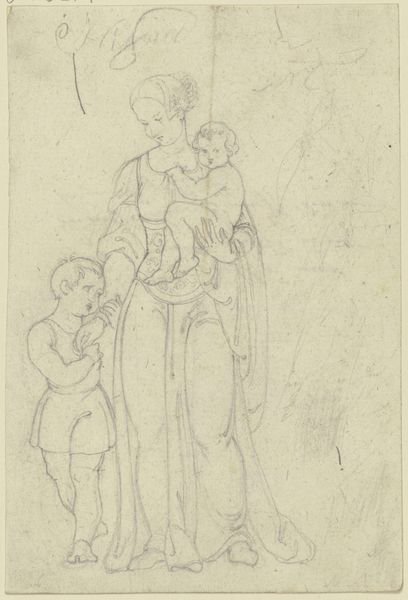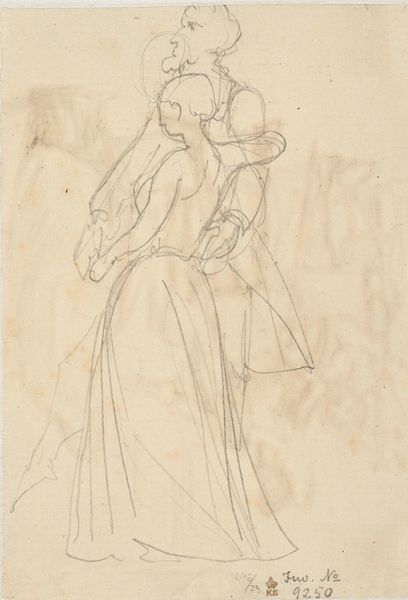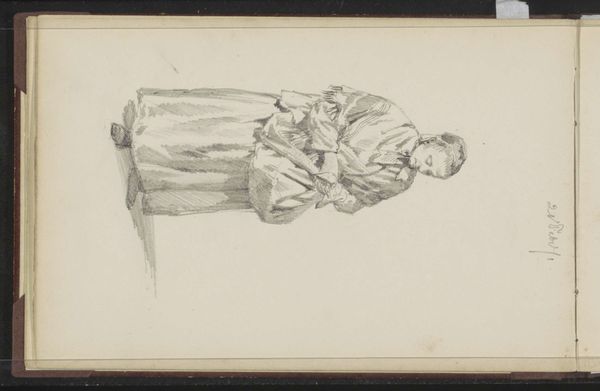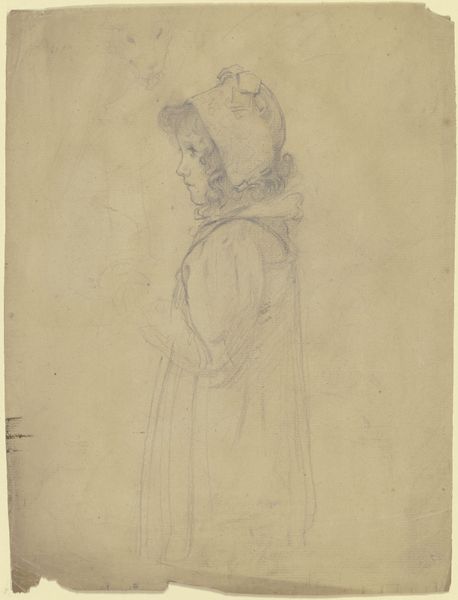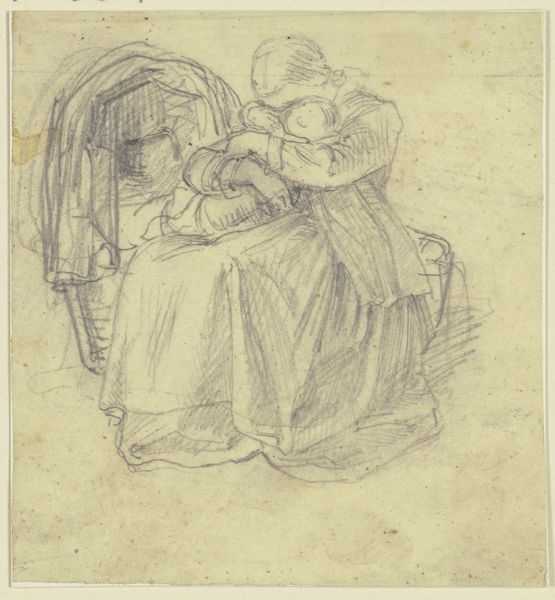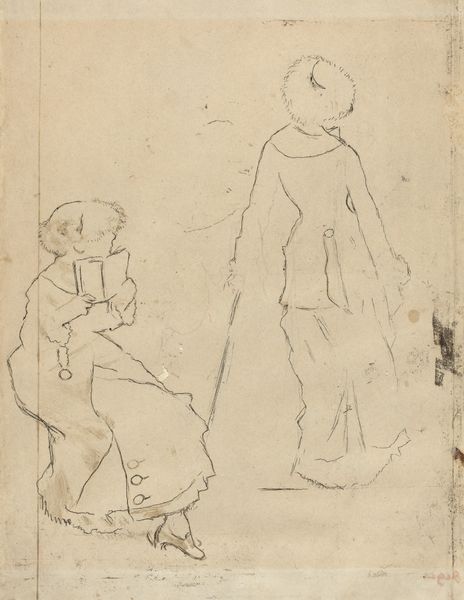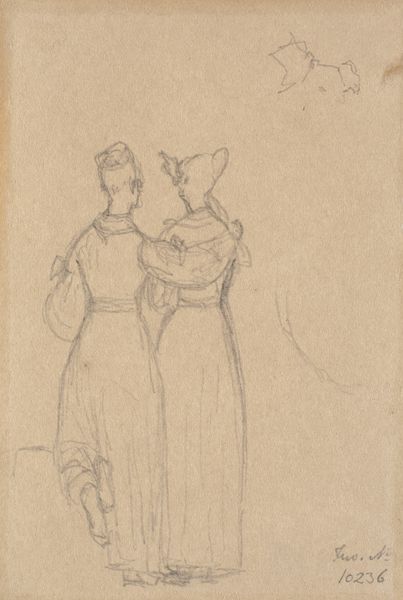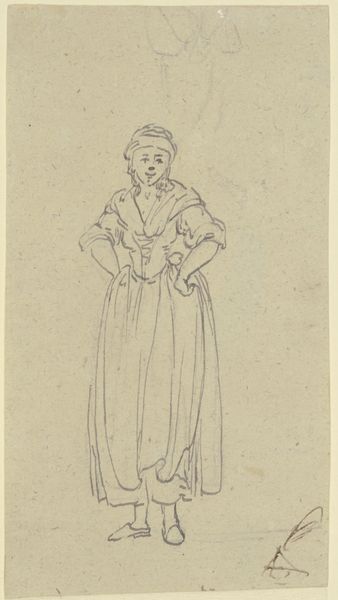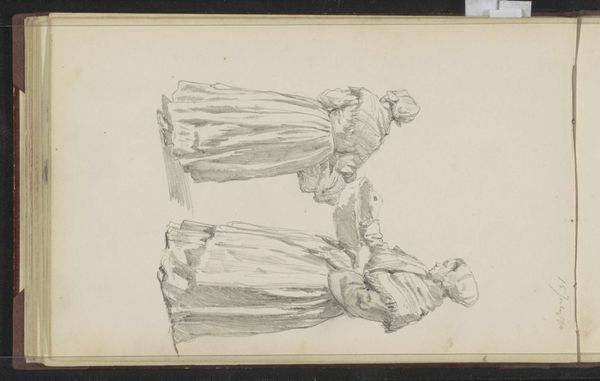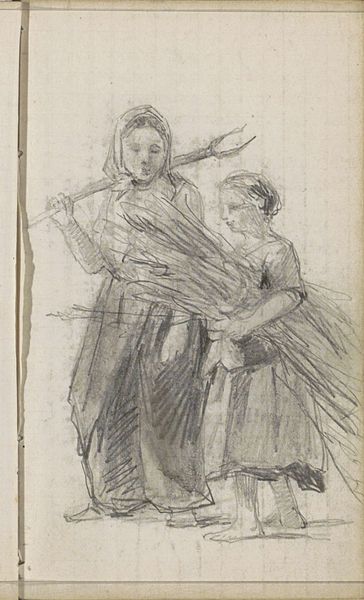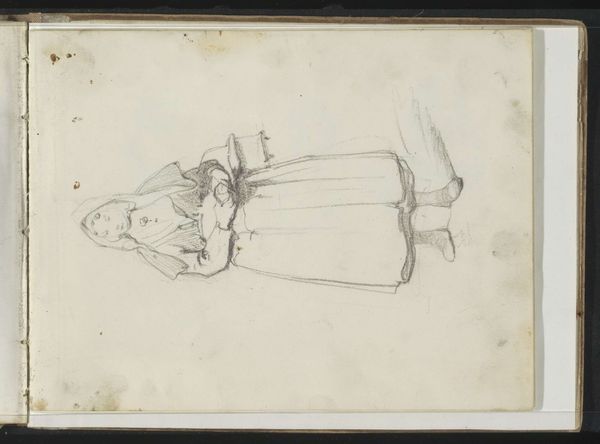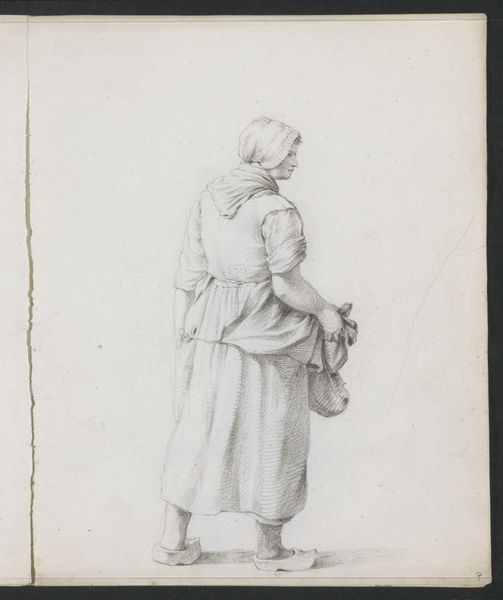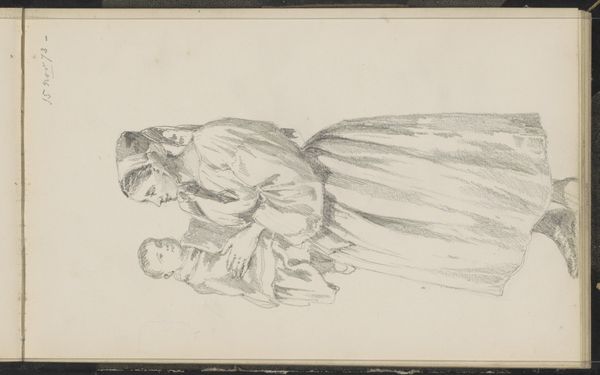
Dimensions: height 192 mm, width 167 mm
Copyright: Rijks Museum: Open Domain
Curator: This quiet drawing, attributed to Jacob Maris and created sometime between 1847 and 1899, is called "Girl Embracing an Old Woman." What strikes you about it? Editor: There’s an immense tenderness despite the sparseness of the drawing. It’s monochromatic, very little detail, but somehow deeply emotional. The embrace feels so protective, so vital. I wonder about the power dynamics, the roles these women play in each other's lives. Curator: Note the careful lines. Even though rendered with pencil on paper, this light pencil work allows the work to be evocative; the piece resonates through implication and understatement, hinting at a long tradition of representing female kinship. The symbol of the crone mother figure—a potent image. Editor: Absolutely. The ‘crone’ represents not decay but accumulated wisdom, lived experience. But within patriarchal societies, how is older womanhood depicted? The image could serve to challenge ageist stereotypes and assumptions, showing the love and reliance, instead. We rarely get that narrative. Curator: Precisely. One might consider the clothing each figure wears as bearing markers for how time has impacted both of these women: The elder’s clothes show more age, with detail lines that may imply wrinkles and adornments; by contrast, the girl's clothing looks lighter, freer, evoking an image of youth’s springtime. These depictions have resonated culturally, over many generations, often informing each other and finding renewed purpose through our collective memory of their meanings. Editor: It brings to mind questions of inheritance: What the older woman imparts, willingly or unwillingly, to the younger. Is it wisdom? Burdens? Societal expectations? A little speculative psychology informs my seeing. I believe that Jacob Maris meant more with this image than simply illustrating tenderness, even within the quiet composition of this artwork. Curator: It is a moment charged with emotional weight. The viewer, of course, fills in some of the gaps that come with a sketchy form. What would be added if this was filled out or enhanced? I’d argue some mystery would be lost. Editor: The sparseness becomes an invitation for engagement. To project ourselves, to see our grandmothers, our daughters, within this embrace. I do find it a remarkably affective drawing. Curator: Agreed. It provides us with layers upon layers. An incredibly powerful testament.
Comments
No comments
Be the first to comment and join the conversation on the ultimate creative platform.
